Years of service 1941–1945 | Name Richard Bong | |
 | ||
Nickname(s) Dick Bong, "Bing Bong", and"Ace of Aces" Allegiance United States of America Battles/wars World War IISouth West Pacific TheatreBattle of Buna-GonaPhilippines campaign (1944–45) Awards Medal of HonorDistinguished Service CrossSilver Star (2)Distinguished Flying Cross (7)Air Medal (15) Battles and wars South West Pacific theatre of World War II, Battle of Buna–Gona, Philippines Campaign, World War II Unit 49th Operations Group, V Fighter Command | ||
F 0408 richard bong top ace in wwii
Richard Ira "Dick" Bong (September 24, 1920 – August 6, 1945) was a Swedish-American United States Army Air Forces major and Medal of Honor recipient in World War II. He was one of the most-decorated American fighter pilots and the country's highest-scoring flying ace in the war, being credited with shooting down 40 Japanese aircraft. All of his aerial victories were in the Lockheed P-38 Lightning fighter. He died in California while testing a jet aircraft shortly before the Japanese surrendered and the war ended.
Contents
- F 0408 richard bong top ace in wwii
- Legends of airpower season 4 episode 7 opening richard bong
- Early life
- United States Army Air Forces
- Death
- Units
- Military awards
- Medal of Honor citation
- Commemoration
- References

Legends of airpower season 4 episode 7 opening richard bong
Early life
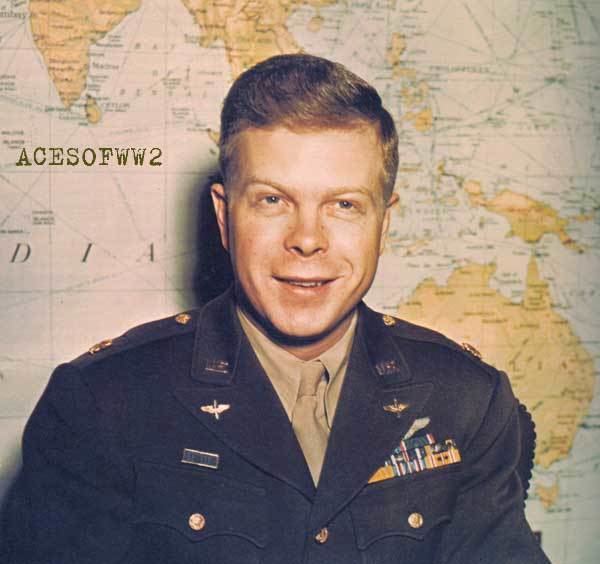
Bong, the son of Swedish immigrants, grew up on a farm in Poplar, Wisconsin, as one of nine children. He became interested in aircraft at an early age and was an avid model builder. Bong entered Poplar High School in 1934, where he played the clarinet in the marching band and participated in baseball, basketball, and hockey. Because Poplar was a three-year school at the time, Bong transferred to Central High School in Superior for his senior year, graduating in 1938.
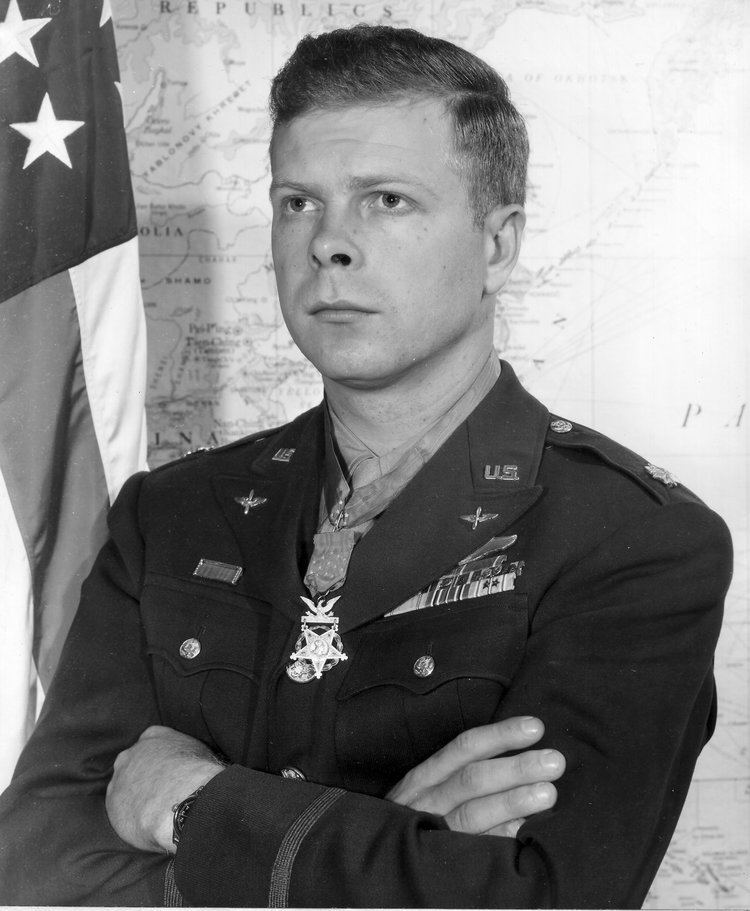
He began studying at Superior State Teachers College (the current-day University of Wisconsin–Superior) in 1938. While there, Bong enrolled in the Civilian Pilot Training Program and also took private flying lessons. On May 29, 1941, he enlisted in the Army Air Corps Aviation Cadet Program. One of his flight instructors was Captain Barry Goldwater (later Senator from Arizona).
United States Army Air Forces
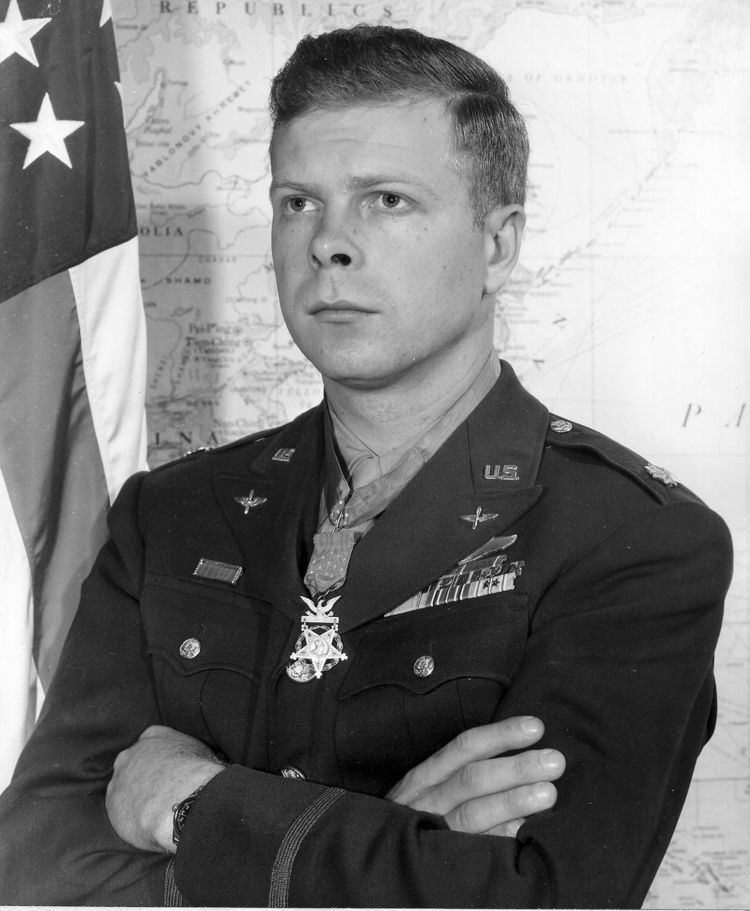
Bong's ability as a fighter pilot was recognized at training in northern California. He was commissioned a second lieutenant and awarded his pilot wings on January 19, 1942. His first assignment was as an instructor (gunnery) pilot at Luke Field, Arizona from January to May 1942. His first operational assignment was on May 6 to the 49th Fighter Squadron (FS), 14th Fighter Group at Hamilton Field, California, where he transitioned into the twin-engine Lockheed P-38 Lightning.
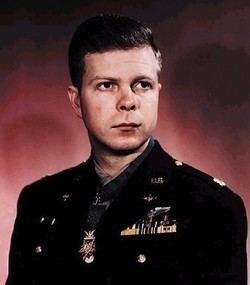
On June 12, 1942, Bong flew very low ("buzzed") over a house in nearby San Anselmo, the home of a pilot who had just been married. He was cited and temporarily grounded for breaking flying rules, along with three other P-38 pilots who had looped around the Golden Gate Bridge on the same day. For looping the Golden Gate Bridge, flying at a low level down Market Street in San Francisco, and blowing the clothes off of an Oakland woman's clothesline, Bong was reprimanded by General George C. Kenney, commanding officer of the Fourth Air Force, who told him, "If you didn't want to fly down Market Street, I wouldn't have you in my Air Force, but you are not to do it any more and I mean what I say." Kenney later wrote, "We needed kids like this lad." In all subsequent accounts, Bong denied flying under the Golden Gate Bridge. Nevertheless, Bong was still grounded when the rest of his group was sent without him to England in July 1942. Bong then transferred to another Hamilton Field unit, 84th Fighter Squadron of the 78th Fighter Group. From there, Bong was sent to the Southwest Pacific Area.
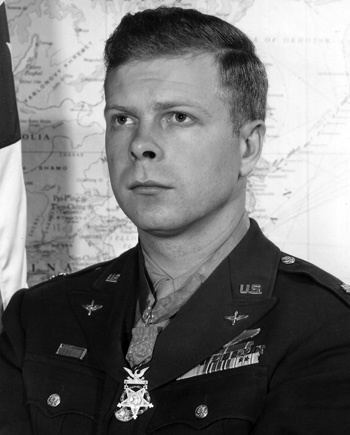
On September 10, 1942, Lt. Bong was assigned to the 9th Fighter Squadron, which was flying P-40 Warhawks, based at Darwin, Australia. In November, while the squadron waited for delivery of the scarce P-38s, Bong and other 9th FS pilots were reassigned temporarily to fly missions and gain combat experience with the 39th Fighter Squadron, 35th Fighter Group, based in Port Moresby, New Guinea. On December 27, Bong claimed his initial aerial victory, shooting down a Mitsubishi A6M "Zero", and a Nakajima Ki-43 "Oscar" over Buna (during the Battle of Buna-Gona). For this action Bong was awarded the Silver Star.
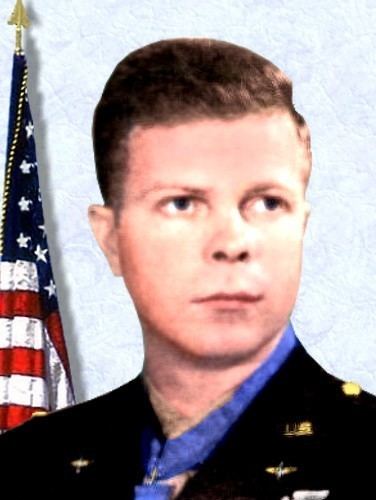
Bong rejoined the 9th FS, then equipped with P-38s, in January 1943; the 49th FG was based at Schwimmer Field near Port Moresby, New Guinea. In April, he was promoted to first lieutenant. On July 26, Bong shot down four Japanese fighters over Lae, an accomplishment that earned him the Distinguished Service Cross. In August, he was promoted to captain. While on leave to the United States the following November and December, Bong met Marge Vattendahl at a Superior State Teachers' College homecoming event and began dating her.
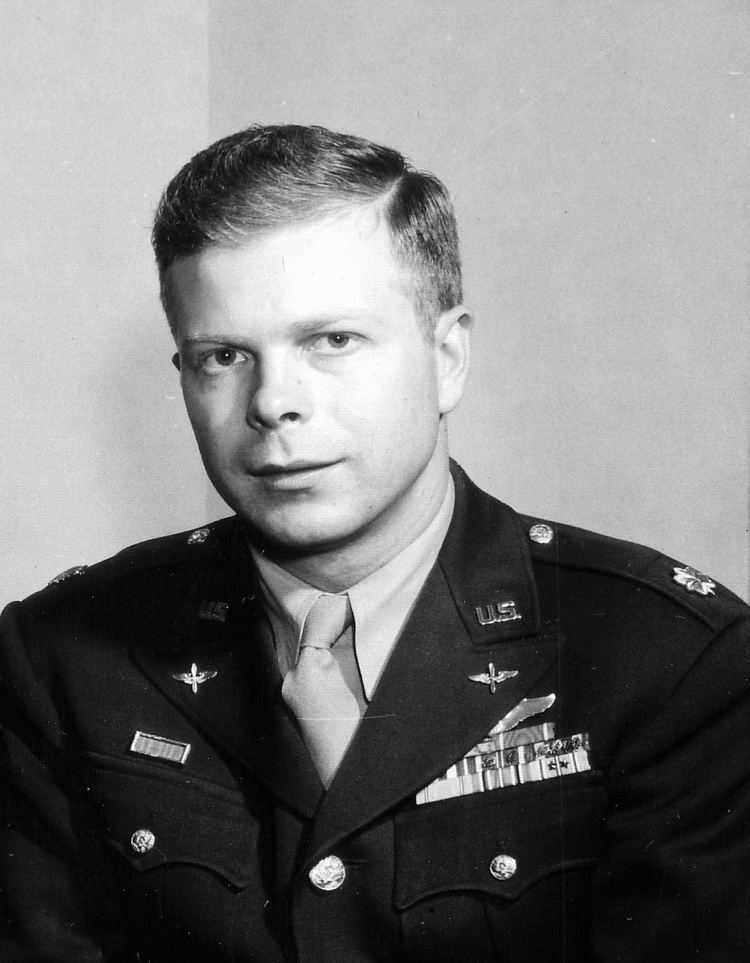
After returning to the Southwest Pacific in January 1944, he named his P-38 "Marge" and adorned the nose with her photo. On April 12, Captain Bong had shot down his 26th and 27th Japanese aircraft, surpassing Eddie Rickenbacker's American record of 26 credited victories in World War I. Soon afterwards, he was promoted by General George Kenney to major and dispatched to the United States to see General Arnold who gave him a leave. After visiting training bases and going on a 15-state bond promotion tour, he returned to New Guinea in September. He was assigned to the V Fighter Command staff as an advanced gunnery instructor with permission to go on missions but not to seek combat; Bong continued flying from Tacloban, Leyte, during the Philippines campaign, and increased his official air-to-air victory total on December 17 to 40.

Bong considered his gunnery accuracy to be poor, so he compensated by getting as close to his targets as possible to make sure he hit them. In some cases he flew through the debris of exploding enemy aircraft, and on one occasion actually collided with his target, which he claimed as a "probable" victory.
Upon the recommendation of General Kenney who was the Far East Air Force commander, Bong received the Medal of Honor from General Douglas MacArthur in a special ceremony in December 1944. Bong's Medal of Honor citation states that he flew combat missions despite his status as an "instructor", which was one of his duties as standardization officer for V Fighter Command. His rank of major would have qualified him for a squadron command, but he always flew as a flight (four-plane) or element (two-plane) leader.
In January 1945, General Kenney sent America's ace of aces home for good. Bong married Marjorie Vattendahl on February 10, 1945. He participated in numerous PR activities, such as promoting the sale of war bonds.
Death
Bong then became a test pilot assigned to Lockheed's Burbank, California, plant, where he flew P-80 Shooting Star jet fighters at the Lockheed Air Terminal. On August 6, 1945, the plane's primary fuel pump malfunctioned during takeoff on the acceptance flight of P-80A 44-85048. Bong either forgot to switch to the auxiliary fuel pump, or for some reason was unable to do so. Bong cleared away from the aircraft, but was too low for his parachute to deploy. The plane crashed into a narrow field at Oxnard St & Satsuma Ave, North Hollywood. His death was front-page news across the country, sharing space with the first news of the bombing of Hiroshima.
At the time of the crash, Bong had accumulated four hours and fifteen minutes of flight time (totaling 12 flights) in the P-80. The I-16 fuel pump was a later addition to the plane (after an earlier fatal crash) and Bong himself was quoted by Captain Ray Crawford (another P-80 test/acceptance flight pilot who flew the day Bong was killed) as saying that he had forgotten to turn on the I-16 pump on an earlier flight.
In his autobiography, Chuck Yeager also writes, however, that part of the ingrained culture of test flying at the time, due to the fearsome mortality rates of the pilots, was anger directed at pilots who died in test flights, to avoid being overcome by sorrow for lost comrades. Bong's brother Carl (who wrote his biography) questions the validity of reported circumstance that Bong repeated the same mistake so soon after mentioning it to another pilot. Carl's book—Dear Mom, So We Have a War (1991)—contains numerous reports and findings from the crash investigations.
Major Richard Ira Bong is buried in a Poplar, Wisconsin cemetery.
Units
Bong's Army Air Forces units:
Military awards
Bong's military decorations and awards include:
Medal of Honor citation
Rank and organization: Major, United States Army Air ForcesPlace and date: Over Borneo and Leyte, October 10 to November 15, 1944Entered service at: Poplar, WisconsinBirth: Poplar, WisconsinG.O. No.: 90, December 8, 1944For conspicuous gallantry and intrepidity in action above and beyond the call of duty in the Southwest Pacific area from October 10, to November 15, 1944. Though assigned to duty as gunnery instructor and neither required nor expected to perform combat duty, Maj. Bong voluntarily and at his own urgent request engaged in repeated combat missions, including unusually hazardous sorties over Balikpapan, Borneo, and in the Leyte area of the Philippines. His aggressiveness and daring resulted in his shooting down 8 enemy airplanes during this period.
